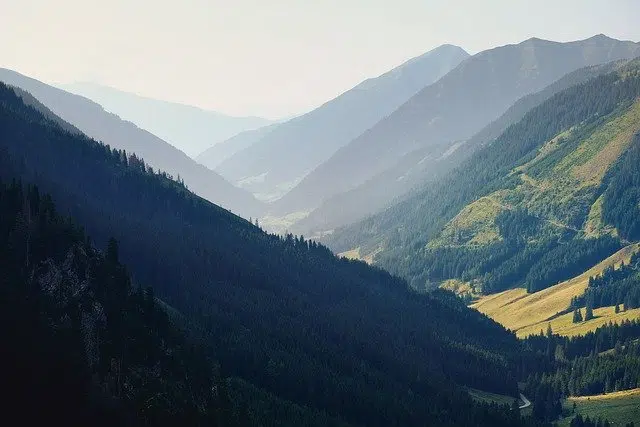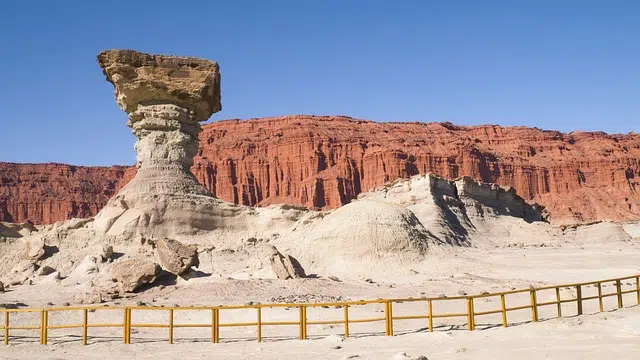
A valley is a plain that lies between mountains.
From Latin vallis , a valley is a plain between mountains or heights . It is a depression in the earth's surface between two slopes , with an inclined and elongated shape. The waters of a river can circulate along the slope of a valley (in the case of river valleys ) or the ice of a glacier can lodge ( glacial valleys ).
A valley can be formed for different reasons, such as erosion generated by a watercourse or tectonic movements. Likewise, it can have different forms according to its origin and age.
Different types of valleys
The youngest valleys are V- shaped, since the slopes are poorly shaped by erosion. When erosion progresses, we speak of alluvial valleys , which have a wide, flat bottom. U- shaped valleys, which are usually of glacial origin, exhibit a concave bottom and steep walls.
It is also possible to distinguish between longitudinal valleys (which are oriented parallel to the folds of the mountain range ) and transverse valleys (perpendicular to the mountain range).
Some of the best known
There are a large number of valleys of global importance. The Great Rift Valley , for example, spans 4,830 kilometers and is home to the highest mountain on the African continent : Mount Kilimanjaro , which rises 5,895 meters above sea level.
The Nile Valley , on the other hand, is much smaller (with an average of 19 kilometers wide), but it has great historical relevance due to having allowed the development of civilizations in Egypt .

In Argentina, the Valley of the Moon is a great tourist attraction.
The Valley of the Moon
The name Valle de la Luna refers to parks in Bolivia, Chile and Argentina. In the latter country, it is a protected area located north of San Juan, one of its provinces, and represents a great treasure for the scientific community, given that it is home to a paleontological reserve of considerable importance. Only there is it possible to appreciate all the characteristics of the Triassic period in an orderly manner. Calculations about the age of its geological formations point to a minimum of 180 and a maximum of 230 million years.
Its landscape is very particular and thousands of tourists from all over the world come to appreciate it every year: the vegetation is scarce, the variety of colors in its soils is impressive and the shapes of its mountains are hypnotic. Despite being an area dedicated to scientific research, it is possible to take a guided tour aboard a vehicle that stops at strategic points, so that visitors receive the pertinent explanations; The duration of the excursion is around 3 hours, and it is also possible to do it by bicycle.
Likewise, it has a museum where a guided tour service is also offered; In this case, concepts about fossils in general and their extraction are taught. As if this were not enough, an extinct volcano, whose chimney is currently known as Cerro Morado, gives those who wish to climb it the opportunity to observe the landscape from a privileged point of view.
outer space
But valleys do not only exist on Earth ; The moon has its own version, in addition to the tens of thousands of craters, which often overlap each other.
Lunar valleys, also known as lunar fissures , have dimensions ranging from 16 to 482 kilometers long and their width approximates 3 kilometers. According to various studies, it is believed that its formation was due to the action of heat and an expansion inside, which affected the weakest areas of the satellite.
